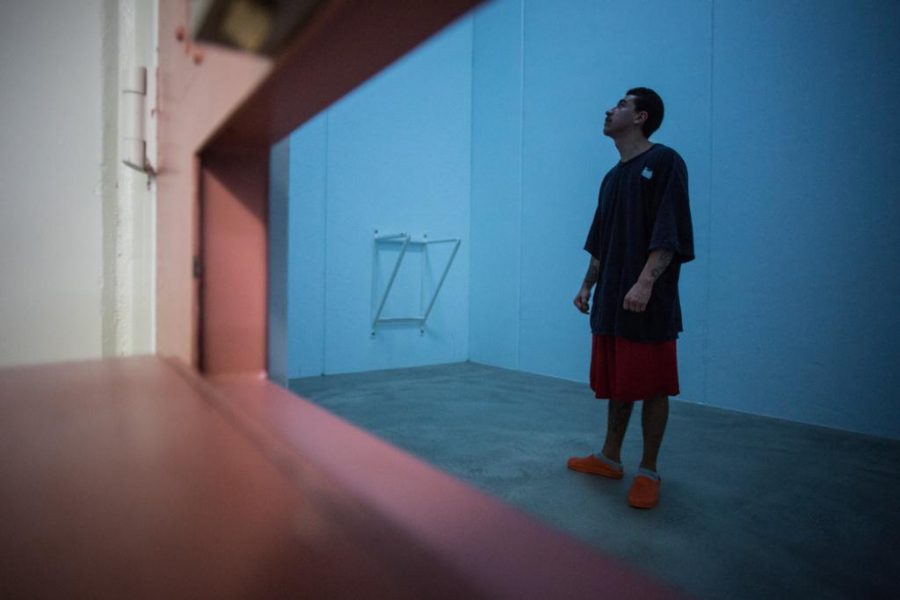University of Utah biology professor, Nalini Nadkarni, recently published research that looks at the positive effects nature photos and videos have on a prison inmates’ psyche.
Nadkarni’s project, intending to bring nature imagery to incarcerated individuals in solitary confinement, is a part of larger efforts to bring science education, conservation projects, and nature to people behind bars. She began working on these efforts in 2004, when she taught at the Evergreen State College in Washington State, and started accelerating her efforts when she moved to Utah in 2011.
“We have monthly science lectures in Draper State Prison, the Salt Lake County Jail, and several juvenile detention centers,” Nadkarni said. “It works very well, but I realized that I was not getting to those who are deepest in the prison system and who have the least access to nature and education — those in solitary confinement. We could not bring lectures or plants and animals to them because of high security, but we did find a way to bring nature videos to them.”
A pilot project was carried out in an Oregon Supermax prison in 2015. Nadkarni and her team of researchers were able to provide inmates with access to nature videos in their exercise rooms for 1 hour per day, combining it with their ordinary routines. They got involved with one cell block in the prison; an Intensive Management Unit which housed 48 men in solitary confinement. They priorly had almost no exposure to nature and were only allowed 45 minutes of exercise 4-5 times per week in the thoroughly blocked off concrete recreation yard.
“I understand on both a personal and professional level the values of trees and forests.” Nadkarni is a forest ecologist, and has been studying the biology of trees for over three decades. “Not just due to their importance to humans providing oxygen, timber and other forest products, but also because the psychological and emotional benefits they offer. People feel calmer, less stressed and less violent when they encounter trees and other parts of nature. It seemed obvious that providing nature or even nature imagery might be helpful in calming and reducing violence in people who are in small concrete cells for 23 hours per day.”
Half of the men were able to watch a nature video while exercising, with a list of more than 40 videos to choose from. They showed a range of nature scenes, from deserts to rainforests. Nadkarni and her fellow researchers then surveyed and interviewed the inmates and prison staff during that time. They were able to track the number of disciplinary referrals and violent infractions of prison rules in the cell block.
According to a recent press release by the University of Utah, an inmate involved in the Oregon project wrote, “The nature project helps me think clearer to know there is so much more beauty in this world then this prison.”
Nadkarni and her research team were not sure whether the imagery would work for people who have been so deeply deprived of nature for such long periods of time. Some of the inmates had been in solitary confinement for up to 7 years. Although scientists have shown that nature is calming to people in many environments, from hospitals to inner city locales, they didn’t know how well the inmates would respond.
According to a U press release, inmates had stated that they felt notably calmer after watching the videos. The calm emotions generally lasted for hours, and 80 percent of the prisoners said that the videos made their time easier. They also reported that the videos seemed to help improve relations with the staff, and that looking back on the videos helped to keep them calm when they grew angry. Some even reported improved sleep habits.
“We learned that after a year of showing these videos to men in solitary confinement for just 1 hour per day, the men who watched the videos felt calmer and less anxious,” Nadkarni said. “They also committed 26% fewer violent infractions than the men who did not see videos. So it showed us that everyone, especially those who lack access to nature, benefits from it when they are provided access.”
The research team recently received a grant from the National Geographic Society to create “nature tool kits” for prisoners that will include nature videos, associated educational materials about the biomes in the videos, and evaluation tools.
“Many prisons across the country have contacted me and expressed interest in doing this in their prisons,” Nadkarni concluded.
Students interested in helping with Nadkarni and her team’s efforts to introduce nature, conservation, and science education to the incarcerated should visit the website for the project, Initiative to bring Science Programs to the Incarcerated (INSPIRE) at: http://nalininadkarni.com/about/science-for-the-incarcerated


